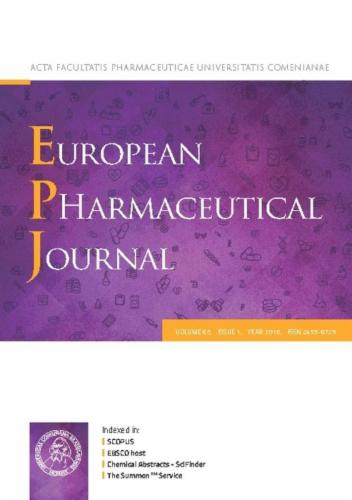The environmental burden of inhalation
IF 4.3
3区 医学
Q1 PHARMACOLOGY & PHARMACY
引用次数: 0
Abstract
Inhalation systems, mostly metered dose inhalers (MDIs) and dry powder inhalers (DPIs), are currently submitted to a critical assessment for their carbon footprint (CF) and environmental impact. They are related to greenhouse gas (GHG) emissions and they produce waste of used devices with withheld drug residues and unused doses. However, with estimated contributions to anthropogenic GHG-emissions of 0.03 % for MDIs and 0.0012 % for DPIs globally, it may not be expected that mitigating the GHG emissions from inhalers will have a meaningful effect on the current climate change and global warming, notwithstanding that nationally these percentages may be somewhat higher, depending on the ratio of MDIs to DPIs and the total national CF. MDIs are particularly the preferred type of inhalers over DPIs in the USA and UK with ratios of 9: 1 and 7: 3 respectively. In such countries, a partial switch from MDIs to DPIs is to be recommended, providing that such a switch does not jeopardize the therapy. Using renewable energy only for the production and waste management of DPIs will make this type of inhaler almost climate neutral. A greater concern exists about inhaler waste, more particularly about the residual drug and unused doses in discarded devices. Inhalers contribute <0.02 % to global plastic waste annually and most plastic inhalers end in the domestic waste bin and not as litter polluting the environment with plastic. However, they do contain retained drug and unused doses, whereas even full inhalers are disposed. Because globally most municipal waste (70 %) ends up in dumps and landfills, leakage of the drugs into the soil and surface waters is a serious problem. It pollutes drinking water and endangers species and biodiversity. Therefore, a good collection system and an adequate waste management program for used inhalers seems to be the most meaningful measure to take for the environment, as this will stop inhalers and drugs from putting ecosystems at risk.

吸入造成的环境负担。
吸入系统,主要是计量吸入器(MDI)和干粉吸入器(DPI),目前正接受碳足迹(CF)和环境影响的严格评估。它们与温室气体(GHG)排放有关,并且会产生带有药物残留和未使用剂量的废旧设备。然而,据估计,计量吸入器和干粉吸入器分别占全球人为温室气体排放的 0.03% 和 0.0012%,因此,减少吸入器的温室气体排放可能不会对当前的气候变化和全球变暖产生有意义的影响,尽管根据计量吸入器和干粉吸入器的比例和国家总碳足迹,这些百分比在全国范围内可能会更高一些。在美国和英国,计量吸入器比干粉吸入器更受青睐,比例分别为 9:1 和 7:3。在这些国家,建议从计量吸入器部分转为干粉吸入器,前提是这种转换不会危及治疗。仅在干粉吸入器的生产和废物管理中使用可再生能源,将使这种吸入器几乎不影响气候。对于吸入器废物,尤其是废弃装置中的残留药物和未使用剂量,存在着更大的担忧。吸入器每年在全球塑料废物中所占的比例不到 0.02%,而且大多数塑料吸入器最终都会被扔进家庭垃圾桶,而不会成为污染环境的塑料垃圾。然而,吸入器中确实含有残留的药物和未使用的剂量,而即使是完整的吸入器也会被丢弃。由于全球大多数城市垃圾(70%)都被丢弃在垃圾场和填埋场,因此药物渗漏到土壤和地表水中是一个严重的问题。它污染饮用水,危害物种和生物多样性。因此,为使用过的吸入器建立良好的收集系统和适当的废物管理计划似乎是对环境最有意义的措施,因为这将阻止吸入器和药物危及生态系统。
本文章由计算机程序翻译,如有差异,请以英文原文为准。
求助全文
约1分钟内获得全文
求助全文
来源期刊
CiteScore
9.60
自引率
2.20%
发文量
248
审稿时长
50 days
期刊介绍:
The journal publishes research articles, review articles and scientific commentaries on all aspects of the pharmaceutical sciences with emphasis on conceptual novelty and scientific quality. The Editors welcome articles in this multidisciplinary field, with a focus on topics relevant for drug discovery and development.
More specifically, the Journal publishes reports on medicinal chemistry, pharmacology, drug absorption and metabolism, pharmacokinetics and pharmacodynamics, pharmaceutical and biomedical analysis, drug delivery (including gene delivery), drug targeting, pharmaceutical technology, pharmaceutical biotechnology and clinical drug evaluation. The journal will typically not give priority to manuscripts focusing primarily on organic synthesis, natural products, adaptation of analytical approaches, or discussions pertaining to drug policy making.
Scientific commentaries and review articles are generally by invitation only or by consent of the Editors. Proceedings of scientific meetings may be published as special issues or supplements to the Journal.

 求助内容:
求助内容: 应助结果提醒方式:
应助结果提醒方式:


